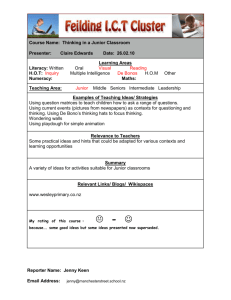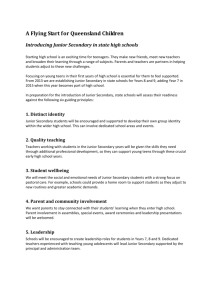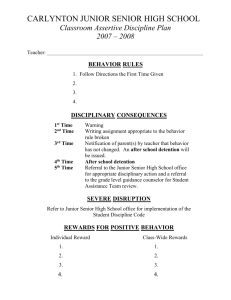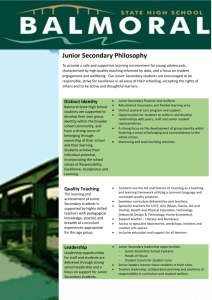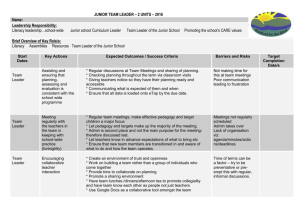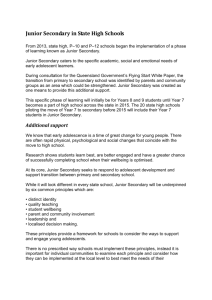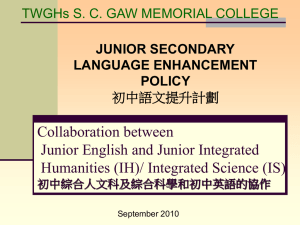Year 7 in secondary from 2015 – What will it mean for
advertisement
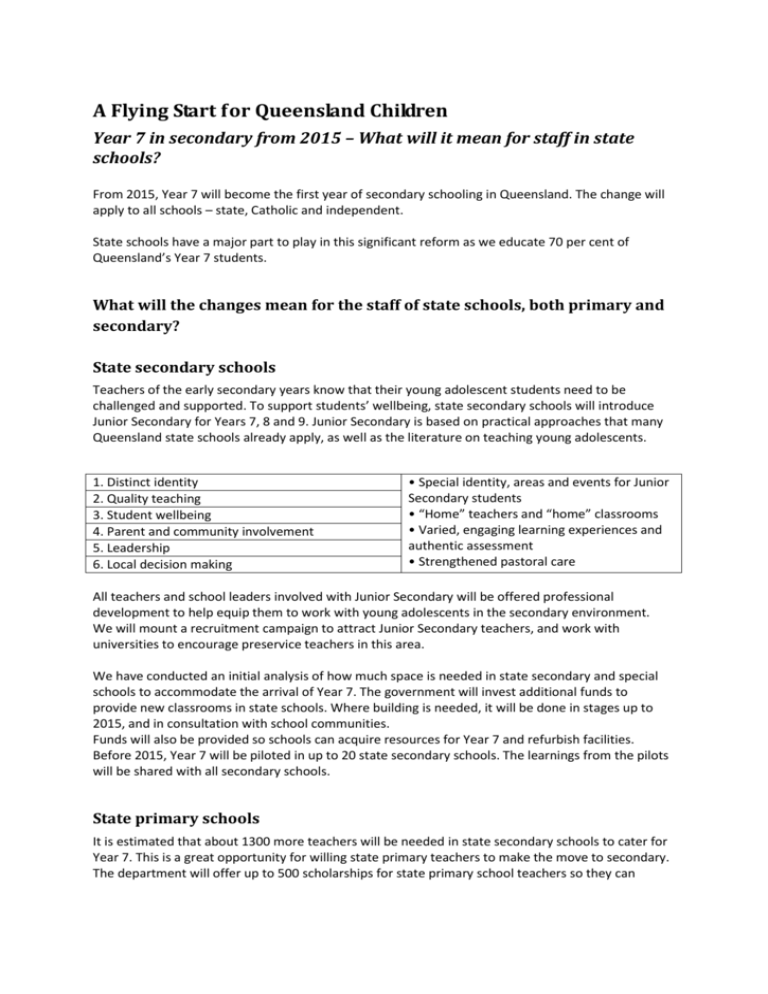
A Flying Start for Queensland Children Year 7 in secondary from 2015 – What will it mean for staff in state schools? From 2015, Year 7 will become the first year of secondary schooling in Queensland. The change will apply to all schools – state, Catholic and independent. State schools have a major part to play in this significant reform as we educate 70 per cent of Queensland’s Year 7 students. What will the changes mean for the staff of state schools, both primary and secondary? State secondary schools Teachers of the early secondary years know that their young adolescent students need to be challenged and supported. To support students’ wellbeing, state secondary schools will introduce Junior Secondary for Years 7, 8 and 9. Junior Secondary is based on practical approaches that many Queensland state schools already apply, as well as the literature on teaching young adolescents. Junior Secondary Six Principles Some practical examples 1. Distinct identity 2. Quality teaching 3. Student wellbeing 4. Parent and community involvement 5. Leadership 6. Local decision making • Special identity, areas and events for Junior Secondary students • “Home” teachers and “home” classrooms • Varied, engaging learning experiences and authentic assessment • Strengthened pastoral care All teachers and school leaders involved with Junior Secondary will be offered professional development to help equip them to work with young adolescents in the secondary environment. We will mount a recruitment campaign to attract Junior Secondary teachers, and work with universities to encourage preservice teachers in this area. We have conducted an initial analysis of how much space is needed in state secondary and special schools to accommodate the arrival of Year 7. The government will invest additional funds to provide new classrooms in state schools. Where building is needed, it will be done in stages up to 2015, and in consultation with school communities. Funds will also be provided so schools can acquire resources for Year 7 and refurbish facilities. Before 2015, Year 7 will be piloted in up to 20 state secondary schools. The learnings from the pilots will be shared with all secondary schools. State primary schools It is estimated that about 1300 more teachers will be needed in state secondary schools to cater for Year 7. This is a great opportunity for willing state primary teachers to make the move to secondary. The department will offer up to 500 scholarships for state primary school teachers so they can undertake study to prepare them to be specialist teachers in secondary. Some state primary schools will require fewer teachers. This will be managed through primary teachers moving to secondary, normal attrition, and advance planning, which will give individual employees the opportunity to express their location preferences. As the focus is placed on Year 7 moving to secondary, primary schools will still be vitally important. They give students the foundation for learning, and help them make a seamless transition to secondary. Enrolment patterns and staffing will vary across state primary schools. The government will provide stability for state primary schools through the Year 7 change. Changes will be managed at the regional level. Transition principles will be developed regarding classified officers, business service managers and teacher aide allocations. All state primary school employees The government has allocated funding to support staff transitions, based on the following principles: 1. A transition phase of up to three years commencing in 2015 will apply to existing primary classified officers including Business Service Managers. 2. Employment commitments will be maintained. No permanent employee will lose their job. 3. Individual workforce plans will be developed for existing primary schools to support the transition. This planning will commence immediately. 4. Any move of existing teachers from primary to secondary will be voluntary and in negotiation with the individual employee supported by appropriate professional development. 5. Staff transition management will be in accordance with industrial awards and agreements. Existing enterprise bargaining provisions will not be compromised. In addition to maintaining job security commitments, the government will maintain class size targets in accordance with the enterprise bargaining agreement. The years 2011 to 2015 provide a lead-up period to prepare schools for the change. The department will set up a transition working party to work with employees and their relevant unions so that agreements are understood and individual employees can have their issues addressed. In addition, the department will conduct a general review of the school resource allocation model. Both primary and secondary schools Every year from 2015, Year 7 students will need to be assisted in making their transition from primary to secondary. This transition begins long before Year 7 students enter the secondary school gates. It will be essential that state primary and secondary schools have good working relationships, so students and parents know what to expect and their studies are continuous. Many state schools have already built these relationships, and can share what has worked for them. Visit www.qld.gov.au/flyingstart to find out more.

